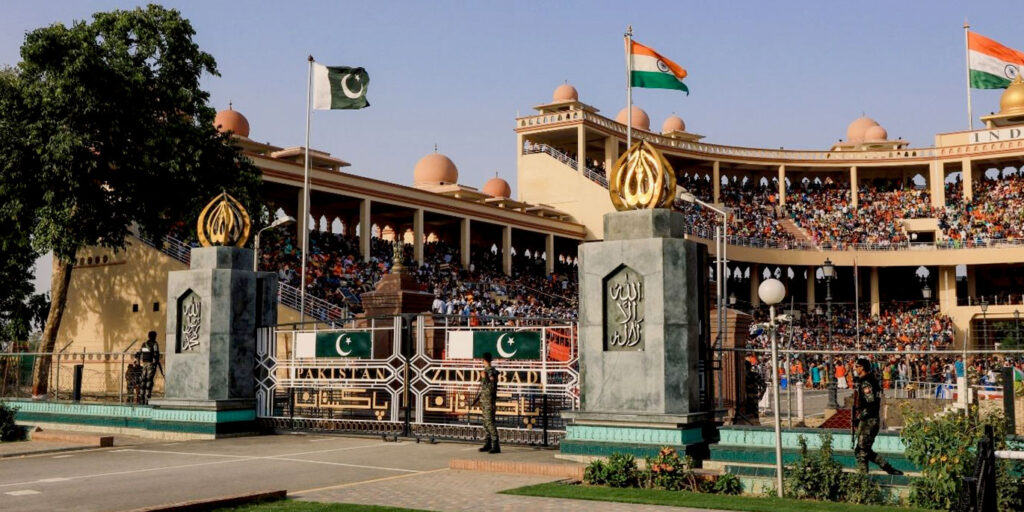The Wagah Border, located between India and Pakistan, is one of the most iconic border crossings in the world. Situated on the Grand Trunk Road, it connects Amritsar (India) and Lahore (Pakistan). Known for its daily Beating Retreat Ceremony, Wagah Border is a must-visit for those who want to experience the spirit of patriotism and witness a spectacular display of military precision.
Architecture and Design of the Wagah Border
The Wagah Border area features a massive iron gate, flanked by two large archways, each bearing the respective national flags of India and Pakistan. The seating arrangement in the stadium-style arena allows thousands of spectators to witness the ceremony. There is also a VIP section, reserved for special guests. The grandstands are designed to provide a clear view of the entire event, enhancing the experience for visitors.
The Beating Retreat Parade Grounds –
Two National Gates –
The Swarna Jayanti Dwar –
How to Reach Wagah Border
By Air :
- The nearest airport is Sri Guru Ram Dass Jee International Airport (ATQ), Amritsar, located around 35 km away.
- From the airport, visitors can hire a taxi or take a bus to Wagah Border.
By Rail:
- The nearest railway station is Amritsar Junction, about 30 km away.
- After reaching Amritsar, visitors can hire a cab or an auto-rickshaw to Wagah Border.
By Road:
- Private taxis and auto-rickshaws are available from Amritsar city to the border.
- Regular buses operated by Punjab Roadways and private tour operators also ply between Amritsar and Wagah Border.
Timings and Entry Fees
Timings:
- The flag-lowering ceremony starts around 4:15 PM (Winter) and 5:15 PM (Summer).
- Gates open for visitors an hour before the ceremony begins.
Entry Fees:
- Free of cost (No entry ticket required).
- Special VIP passes can be availed for reserved seating by applying in advance through local authorities.
